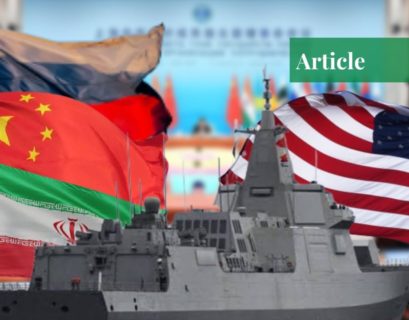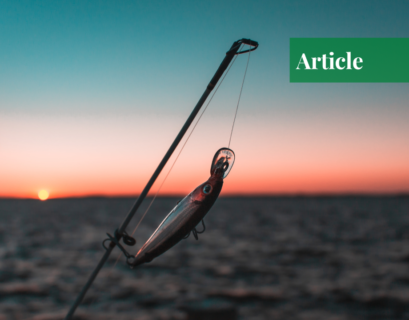Background
The High Seas treaty is the culmination of a process that began about 20 years ago. The UN established an ad hoc group to talk about preserving the oceans back in 2004. After years of preliminary discussions, negotiations for a legally binding ocean treaty began in earnest in 2018.
From the first time the question was posed to the present, it has been a long journey. Many people had hoped that 2022 would mark a breakthrough, but negotiations in August of that year—the second round—failed. The most recent discussions were promoted as the oceans’ last chance. There were times during the negotiations when some people feared that an agreement would never be reached because of disagreements.
Importance of Maritime Biodiversity
The atmosphere and the oceans are the only two major global commons. The oceans may receive less attention, but “the health of our planet depends on protecting this half of the earth’s surface”, according to Rebecca Helm, a marine biologist at Georgetown University.
Numerous marine species migrate widely yearly, traversing oceans and national borders, including dolphins, whales, sea turtles, and many fish. Before now, efforts to protect them—as well as human communities that depend on fishing or marine life-related tourism—have been hampered by a perplexing patchwork of laws.
To address threats and concerns across species’ ranges, the High Seas treaty will help tie together the various regional treaties. Nichola Clark, an oceans expert at the Pew Charitable Trusts who watched the talks in New York, said that now that the long-awaited treaty text has been finalized, “This is a once-in-a-generation opportunity to protect the oceans — a major win for biodiversity.”
Adding further, Gladys Martnez de Lemos, executive director of the nonprofit Inter-American Association for Environmental Defense, which focuses on environmental issues throughout Latin America, said that protection will also benefit coastal biodiversity and economies.
Secretary-General António Guterres also congratulated UN member countries for finalizing a text to ensure the conservation and sustainable use of marine biological diversity in areas beyond national jurisdiction, calling it a “breakthrough” after nearly two decades of talks.
It is imperative to notice that the agreement will also establish marine protected areas on the high seas and a new organization to oversee ocean life conservation. Doing so is essential to fulfilling the recent commitment made at the U.N. Biodiversity Conference to conserve 30% of the world’s land and waters. The High Seas treaty also establishes guidelines for performing environmental impact analyses for ocean-related business activities.
Legal Protection
Until now, efforts to protect marine life—along with human communities that depend on fishing or tourism related to marine life—have been hampered by a confusing patchwork of laws. Coastal biodiversity and economies are also benefited from protection.
Activities on the high seas are frequently unregulated and insufficiently monitored, making them vulnerable to exploitation. The rules that do exist are fragmented, piecemeal, and weakly enforced. Only 0.8% of the world’s oceans are classified as “highly protected,” and only 1.2% of them are protected. There are enormous, unmanaged habitat gaps between the puzzle pieces.
By granting the legal authority to establish and oversee marine protected areas in international waters, the High Seas treaty seeks to close those gaps. According to experts, this will be essential for achieving the international biodiversity commitments made by countries at COP15, the UN Biodiversity Conference in Montreal in December.
Application of the High Seas Treaty
Determining the procedures for establishing marine protected areas and ensuring that costs and benefits were distributed fairly were significant sticking points, particularly given that many developing countries might lack the resources or technology to conduct their scientific exploration of the high seas. However, the negotiations came to a successful conclusion late on Saturday night after a long final session.
According to the International Union for Conservation of Nature (IUCN), nearly 10% of marine species worldwide were found to be in danger of going extinct in the most recent assessment. To help achieve the global goal of protecting 30% of the world’s oceans, which was set at the UN biodiversity conference last year, the High Seas treaty creates marine protected areas in these high seas.
The amount of fishing allowed, the paths of shipping lanes, and exploration activities like deep sea mining—the removal of minerals from a sea bed 200 meters or deeper—will all be restricted in these areas. Environmental organizations have expressed concern that mining operations could contaminate marine life, disturb animal spawning grounds, and produce noise pollution.
According to Dr. Robert Blasiak, an ocean researcher at Stockholm University, the difficulty is that no one is aware of the value of ocean resources or how they could be divided. According to him, our understanding of the deep ocean is comparable to a large, high-definition, widescreen TV where only three to four of the pixels are functional. Thus, there are thought to be more than two million species in the ocean, but we have only identified about 230,000 of them.
Greenpeace Nordic oceans campaigner Laura Meller praised nations for “putting aside differences and delivering a treaty that will let us protect the oceans, build our resilience to climate change, and safeguard the lives and livelihoods of billions of people”.
Way Forward
The agreement must be formally adopted at another meeting, and there will be a lot of work that would need to happen before the treaty is put into effect. The Science and Technical Committee is one of many institutional organizations that must be established. The challenging process of ratification and ocean protection now begins. To counter new threats like deep sea mining and put protection in place, we must build on this momentum.
If you want to submit your articles, research papers, and book reviews, please check the Submissions page.
The views and opinions expressed in this article/paper are the author’s own and do not necessarily reflect the editorial position of Paradigm Shift.



















